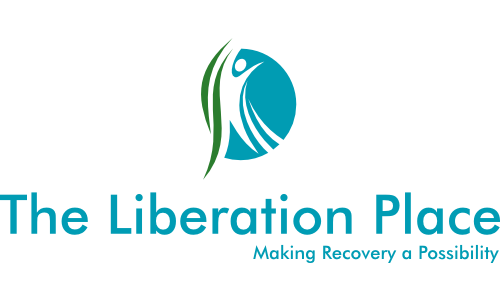Living the Life I Want to Live
When people get asked to describe the type of life they want to live, it's pretty common that they spend most of the time listing their possessions, the location they'd like to own property in, and maybe even what their dream job would be. While there's absolutely nothing wrong with looking at your life from this perspective, this isn't what I want us to explore in the work we do for making behavioural changes. Living the Life I Want to Live is all about living a life that holds purpose and meaning for what we do. It's about taking things on that we're motivated to take on, and it's about doing things in life that we are driven to do, primarily for the internal acknowledgement and reward, not the external Instant Gratification that many of us are motivated by these days.
When I was living my former life, a life that was driven by addictive, obsessive, and compulsive behaviours that were simply designed to instantly relieve me of my emotional pain, I didn’t have an understanding for what it meant to live a life with purpose. In fact, the only purpose that was important to me was getting enough money together for the next substance I needed to escape from my own reality. This often led to me behaving in ways that activated guilt and shame in my system, which unbeknownst to me, were 2 of the biggest things I was trying to escape from in the first place. Guilt and shame are basically in our system to point out when we’re not living a life that lines up with our true core values and beliefs. So, it makes sense that if we want to deal with this overwhelming experience of guilt and shame in a healthy way, and add purpose and meaning to our daily activities, we have to live a life that is guided by these true core Values and Beliefs. But how do we figure out what this looks like in terms of how we actually live our life?
Just for a moment, imagine that you've been driving a bus called “Your Life”. Like any bus in the real world, as you move along your journey, you're going to pick up lots of different passengers. Inside of the work we are doing, the passengers we pick up along the way are the different memories, bodily sensations, conditioned emotional responses, and programmed thoughts, that make up the multiplistic parts of our personality. As you go about your own personal journey, you've probably picked up some passengers that you like, and then there are some that you don't mind and generally just tolerate because they’re not that impactful on your life in any significant way. However, it's often the case that people develop parts of their personality that they really don’t like at all, and most of us who experience this, spend a considerable amount of time in life trying to get these passengers removed from our bus.
We try to change their appearance in some way, masking their presence, and we go to great lengths to make these passengers less visible to people outside of our bus. This is often a desperate, and mostly futile attempt to make the bus we're driving look more appealing to those that may judge. For example, if you've been dealing with parts of your personality that you're embarrassed by, the actions you take when you're blended with these parts, in essence when they're driving your metaphorical bus, cause you to experience guilt, shame, and even anger. This pain and suffering is usually the reason we try to stop the bus completely so we can ask, and sometimes even force, these unwanted passengers to leave. Unfortunately, this simply isn’t possible. Each and every part of our personality has a purpose in our journey. They are there for a reason and, at one point in time, they probably had a very specific role to play in the way we reacted to our surroundings, usually based on the emotional experience we had at that time.
"It is often the case that people develop parts of their personality that they really don’t like at all, and most of us who experience this, spend a considerable amount of time in life trying to get these passengers off our bus."
~Steven Morris RP.
Many people can come to this realization about not liking the passengers on their bus on their own over a period of time. If you are one of these people, this is precisely the reason why you develop ways of hiding the parts of your personality that you don’t like by changing their appearance in some way. When we have a negative thought or a feeling that we’re taught not to like, we try challenging it in some way, usually by judging it as bad or wrong, labelling it as “stinking thinking” or some other negative connotation. We may even learn that these thoughts come from a specific “negative core belief,” and spend our time trying to remove this belief, effectively trying to erase our own past from our memory. This might work for short periods of time, as the part that’s holding these negative core beliefs simply conforms to the overarching peer pressure that comes from within. However, metaphorically speaking, it’s a bit like meeting a gang member and forcing him to put on a suit and tie to make him appear less frightening.
The problem with this is that underneath the surface, the gang member still lives on, in his original form. Even if he’s wearing an expensive suit and tie, you know he hasn’t changed that much really, so you try to manufacture ways of avoiding him being on your bus completely with the hope that at least you won’t have to see him too often. Sometimes, this is the definitive place in time that sees the onset of addictive, compulsive, or obsessive coping mechanisms. We begin to avoid the underlying internal chaos by numbing our internal state. That way, we don’t have to deal with it, at least for a short period of time while the substance or process removes what it is we are desperately trying to avoid.
You may have tried many different ways to get rid of the parts of your personality that hold onto things like anxiety, sadness, guilt, shame, or loneliness that you’ve been experiencing for a really long time. For example, maybe you’ve avoided people in general to escape from the fear of judgement at all of your social engagements. In therapy, we call this experiential avoidance, and if this applies to you, you've probably found yourself declining social gatherings or refraining from conversations with others in an attempt to keep yourself safe from guilt and shame. However, while these are successful strategies in many situations, they are a short-term solution to a long-term problem. If this is how you’ve been dealing with the passengers on your bus you don’t like up until now, you’ve learned more about how to be on the same bus with all these different characters, existing in the same space as them, but generally ignoring their presence at times, and even learning how to make secret deals with them to stop them from taking control of your bus from time to time.
"I often refer to the way that some people experience The Problem with Instant Gratification as The Next Shiny Thing syndrome"
Building an understanding for the different stories that activate these parts of our personality in the past is an essential part of the therapeutic process. Once we have empathy, compassion, and self-awareness, for the reasons why we do what we do, we've created the possibility for change. However, trying to implement change without direction is usually a pointless exercise, and often results in cycling through old behaviours, and becoming frustrated that things are still the same, even though we know what we need to stop doing, we just can’t seem to stop. There are a number of different reasons for this, one of which is a lack of direction. We have to find a direction to head in, so we know exactly what it is we are trying to do. This is why getting to know our values and beliefs is a key component of the early behaviour change process.
Values and beliefs underpin almost everything we do. Not only are they are the reason why we experience guilt and shame; they are also the concepts from which we establish boundaries, both externally with other people, and internally with ourselves, and they give us the direction in life that provides meaning to everything we do. If you are living a life that is driven by your values, then you are taking on things that have value to you. In turn, this provides meaning to your life, because you are participating in meaningful tasks that add value to the direction your life is heading. Alternatively, if you are living a life that is constantly compromising your true core values, then your system is filled with guilt and shame, two of the basic emotions that, as I previously said, can activate maladaptive coping mechanisms in an attempt to avoid their presence in our system. When we live our lives dominated by our stories from the past we exist in a state of fear, running from emotional experiences that we don’t know how to handle.
This is the main reason for addictive, compulsive, and obsessive coping mechanisms that lead to a lifestyle of chaos and rigidity that many of us get stuck in. We are trapped in behaviours that are filled with Instant Gratification, avoiding the hard work it takes to live an emotionally fulfilling life, a life that has direction, a life you want to live. Any behaviour change process must start with understanding our values, and the beliefs about the ways in which you want to live by those values every single day. If you think about the metaphorical journey we are on, when you get on any bus, there is usually a little sign at the front that says where the bus is going. Passengers who get on the bus will be taken in this direction, with many scheduled stops along the way.
The passengers on the bus don’t get to decide where the bus goes, or even when it stops, that’s up to the driver. So, in order to build a solid foundation for our new Recovery Lifestyle, and beyond into Living the Life I want to Live, it’s time to look at what direction we want the bus we call our life to go. What exactly do we choose to have on that little sign at the front of our bus that tells us what direction we are heading? We do this by establishing the values we want to live by in our life, and what it is that we want to be known for in the areas of life that are important to us. However, if you’re like me, you may have a difficult time understanding what's important to you, let alone the complicated aspects of what your values are, how your beliefs are fluid and can change over time, or even how to know the difference between values and beliefs in the first place. On the following pages, I will start by exploring the process we need to follow if we want to create sustainable and successful behaviour change.
Download the PDF of this page.
Follow us on Social Media





